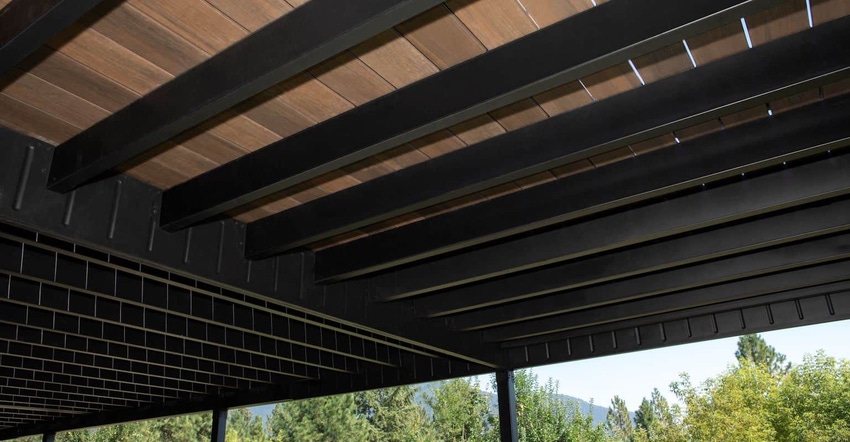In a continuing education webinar presented by Architectural Record, Todd Smith, senior specifications manager for Fortress Building Products, closely examined how steel deck framing can support larger loads without the risk of premature failure.

In a continuing education webinar presented by Architectural Record, Todd Smith, senior specifications manager for Fortress Building Products, closely examined how steel deck framing can support larger loads without the risk of premature failure. This increases occupant capacity, providing a sizeable space to safely accommodate social interactions. Smith also analyzed how the noncombustible material meets stringent fire codes for increased physical safety and longevity. Steel’s premium yield strength and durability additionally provide long-term structural integrity, which ensures occupant safety.
The webinar also provided an overview of how steel-framed decks use fewer materials than traditionally framed decks to support more sustainable builds. This is bolstered by the materials' ability to reduce the amount of landfill-bound scrap after a project. With upkeep that has a low environmental impact, steel deck framing reduces damage to neighboring ecosystems.
Trending uses of decks in outdoor living include establishing the outdoor space as a destination for social gatherings and creating a designated zone for wellness-focused activities.
“Daily contact with outdoor spaces is key to leading a happy, healthy and meaningful life.”
Tim Beatley, The Biophilic Cities Project, University of Virginia’s School of Architecture.
In residential backyards, decks help promote a more restful, restorative experience. This helps make it possible for homeowners to prioritize their physical and mental health. It's been said that 120 minutes outside per week is beneficial to well-being. Decks also accommodate wellness-focused activities such as outdoor dining, socializing and rest. They create a transitional space that provides a connection to nature without sacrificing comfort.
Comparing Wood to Steel Deck Framing
Wood is a time-honored choice that is familiar and has a historically fair price point. However, it is prone to moisture absorption, deterioration, twisting and warping, and damage from pests, and it may increase a project’s carbon footprint.
Steel, on the other hand, has unmatched strength, enhanced moisture resistance, weatherability and design flexibility, and is a non-combustible building material. It is storm-ready and can be used in strategic design strategies. Because steel has a strong strength-to-weight ratio and because it does flex with force, steel-framed decks can be engineered to withstand earthquakes, high winds, heavy snow and hurricanes better than traditional wood framing. In the event of flooding that could leave a deck partially submerged, steel profiles can be preserved and reused in place. The surface boards may need to be replaced depending on the material, but the framing itself is not going to rot.
Steel has an incredible capacity for load-bearing weight. This has a direct correlation with its ability to provide greater spans. Steel joists and beams can span up to 20 feet between supports, which you don’t find often with lumber. Greater spans mean builders aren’t handcuffed by the span limitations of wood joists, and it allows for greater design flexibility to accommodate product vision and post placements. By using steel deck framing, you could end up with fewer obstructed views and more useable and uncluttered space below the deck.
Steel framing can support decks with curves, shapes and angled corners. Other benefits of steel include its being in demand and having a contemporary industrial appearance. It provides clean lines and creates a modern appeal over other traditional framing materials.
Steel has an extended service life. Leading product manufacturers often offer 25+ year warrantied life spans. Steel deck frames need to be replaced less frequently, thereby reducing a project's carbon footprint. Pre-cut materials conserve resources as well. Steel profiles that are cut to precise specified lengths to accommodate project needs reduce material waste.
Steel is a recycled product and can continue to be recyclable, without loss of its quality. Recycling steel requires less energy than it originally took to make. At the end of the product’s life, steel-framed deck systems can be dismantled during renovations or demolitions and the steel reused.
Read more about:
sustainabilityAbout the Author(s)
You May Also Like




